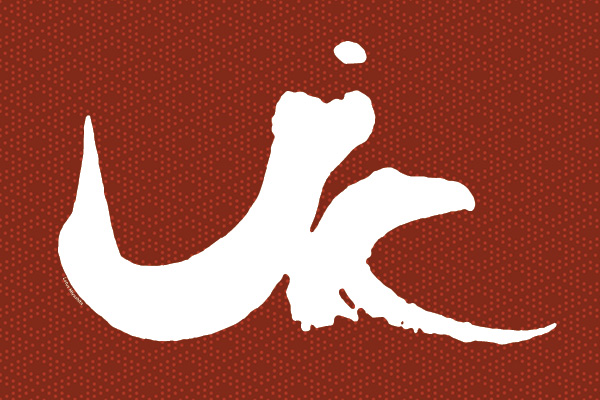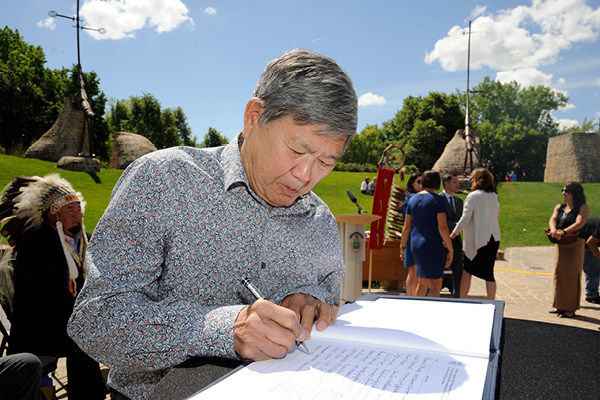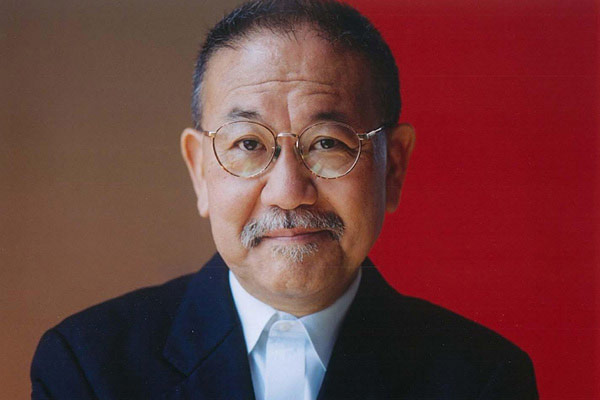The Japanese Canadian Soldiers of the First World War and the Fight to Win the Vote
By David R. Mitsui
 On July 9, 2007, I submitted a nomination to the Historic Sites and Monuments Board of Canada regarding the Japanese Canadian soldiers of WW I. In early August 2011, I received a letter from The Honourable Peter Kent, Minister of the Environment, P.C., M.P. advising me that he has officially designated the “Japanese Canadian Soldiers of the First World War and the Fight to Win the Vote” a national historic event. Lyle Dick, Parks Canada historian, writes that the “…event was a milestone in the history of Canadian democracy…as it marked the first time that an immigrant community of Asian origin attained the franchise in British Columbia…”.
On July 9, 2007, I submitted a nomination to the Historic Sites and Monuments Board of Canada regarding the Japanese Canadian soldiers of WW I. In early August 2011, I received a letter from The Honourable Peter Kent, Minister of the Environment, P.C., M.P. advising me that he has officially designated the “Japanese Canadian Soldiers of the First World War and the Fight to Win the Vote” a national historic event. Lyle Dick, Parks Canada historian, writes that the “…event was a milestone in the history of Canadian democracy…as it marked the first time that an immigrant community of Asian origin attained the franchise in British Columbia…”.
There are several reasons for declaring this event as having national significance: The decision of the Japanese Canadian volunteers to overcome the racial barriers in British Columbia by enlisting with battalions of the Canadian Expeditionary Force in Alberta; The fortitude of the Japanese Canadian soldiers in overcoming preconceptions of their military inferiority by demonstrating outstanding ability and courage on the battlefield on the Western Front of the First World War in Europe; The Japanese Canadian veterans’ skill in grass-roots political action, after the First World War, enabling them to overcome enormous resistance by winning the right to vote in 1931; and The Japanese Canadian soldiers’ demonstration of tremendous resilience in overcoming the many injustices of the Second World War in part through the renewal of remembrance of their comrades of the First World War, an important component in the cultural revival of the Japanese Canadian community after the traumatic experience of internment and dispossession in the Second World War era.
Background
In 1916, 222 Japanese Canadian volunteers enlisted in the Canadian Expeditionary Force (CEF) for military service overseas in the First World War. Through enlisting, they overcame racial barriers and showed their determination to win their citizenship rights through military service. The Japanese Canadian soldiers fought in most of the major engagements of the CEF on the Western Front in Europe in 1917 and 1918. Their valour was recognized in the awarding of 11 Military Medals for Bravery to Japanese Canadian soldiers. Fifty-four, or nearly one-fourth of the Japanese Canadian soldiers were killed on the battlefield or died from wounds sustained in combat, and most of the surviving soldiers were also wounded.
In 1920, following their return to Canada, the Japanese Canadian community erected in Stanley Park, Vancouver, the impressive Japanese Canadian War Memorial. It is a distinctive monument that blends both European and Eastern design traditions. In 1920, the veterans also sought to be granted the provincial franchise, which had been denied to all Japanese Canadians following the British Columbia government’s passage in 1895-96 of exclusionary legislation barring them from the vote. Despite their distinguished war service, many groups in BC reacted negatively to extending the franchise to the Japanese Canadian veterans and forced the government of Premier Oliver to withdraw its amendment to the BC Elections Act that would have granted them the provincial vote.
After their unsuccessful bid to win the franchise in 1920, the Japanese Canadian veterans formed BC Branch No. 9 of the Canadian Legion in 1926. Using this organization as a base, they forged alliances with other veterans’ groups and in 1931 sent their leaders (President Sgt. Masumi Mitsui; Secretary Corporal Saisonuke Kobuta; Businessman Saburo Shinbone; Naburo Murakami; Rikuzo Hoita; Nobuhei Watanabe; and Legion Provincial Secretary Robert Macnicol) to Victoria to lobby members of the BC Legislative Assembly again in an effort to win the franchise. At the end of that debate, they succeeded in attaining the provincial franchise by a single vote (19-18) in a division of the legislative assembly. They became the first group of Asian Canadians to win the vote in British Columbia, a province that had enacted a long list of racial exclusions with respect to the franchise. Their efforts thereby produced a major breakthrough in Canada’s constitutional evolution to a full democracy, paving the way for other groups of Asian origin, a process eventually leading to the recognition of the political rights of all Canadians.
Over the next few months consultations will commence to determine the text for a plaque, to be unveiled at the War Memorial to Japanese Canadian Soldiers of World War I, in Stanley Park, Vancouver.
I am indebted to the research conducted by Mr. Lyle Dick, Parks Canada Historian, and wish to acknowledge his sincere personal and professional interest in Japanese Canadian history and especially his assistance in the preparation of the nomination. I also wish to thank Lieutenant-Colonel Roy Kawamato, Chair of the Japanese Canadian War Memorial Committee, for supporting this nomination.
Bibliography
Ken Adachi. The Enemy That Never Was: A History of the Japanese
Canadians. (Toronto: McClelland and Stewart, 1976)
Lyle Dick, “Sergeant Masumi Mitsui and the Japanese Canadian War
Memorial: Intersections of National, Cultural, and Personal Memory.”
Paper presented to the annual conference of the Canadian Historical Association,
Saskatoon, Saskatchewan, 28 May 2007.
Roy Ito, We Went to War: The Story of the Japanese Canadians Who Served
During the First and Second World Wars (Stittsville, Ontario: Canada’s
Wings, 1984).
Patricia E. Roy. The Oriental Question: Consolidating a White Man’s
Province, 1914-1941 (Vancouver: UBC Press, 2003).
______________________________________________________________________________
David R. Mitsui
Grandson of Sgt. Masumi Mitsui, MM
4904-144 St
Edmonton, Alberta
Canada T6H 4G8 780-435-6402
David.mitsui@ualberta.ca



